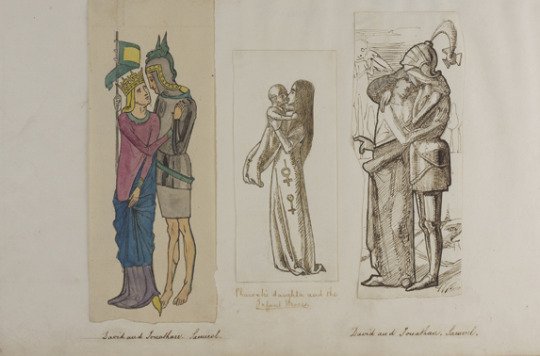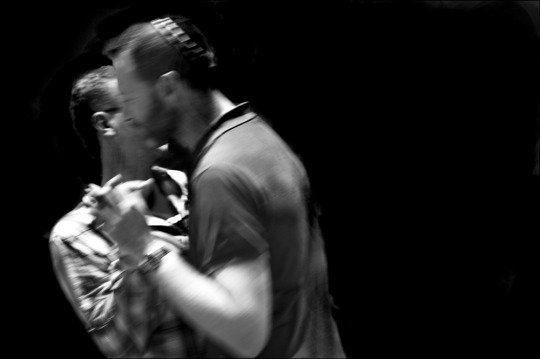Pride in our collection
By Hannah and Zara, work experience students in the Learning Team.
During Pride month, we have been considering what it is to be part of both an LGBT+ and a Jewish community and the intersection between them, by looking at images within our collection.
We have been looking at different images, the first ones being drawings of David and Jonathon by Simeon Solomon. Solomon was born in London in 1840 to a middle-class Jewish family. He was gay and found creative and unique ways to express his sexuality through art. His early works were influenced greatly by Shakespeare and the Bible. As he grew up in a Jewish home, Solomon received a religious upbringing which was reflected in his art. He illustrated characters from Bible stories, often with Hebrew captions

These images are from one of Solomon’s early sketchbooks from a collection of pen and ink drawings. The image on the left is of David in battle armour embracing Jonathon. The image on the right is of David with a crown clasping Jonathon wearing a helmet and holding a pennet.
David and Jonathon were heroic figures from the Book of Samuel who formed a pledge of friendship – “Jonathon made a covenant with David, because he loved him as his own soul” (1 Samuel 18). This relationship of love may be especially surprising considering the context of the two figures, who were rivals for the monarchy of the Kingdom of Israel.
The biblical account of David and Jonathon has been interpreted by some, especially modern LGBT+ groups, as the story of two lovers, which is emphasised in Solomon’s drawings. These images and the love between David and Jonathon are important as they represent another type of Jewish experience that is not always represented in Jewish art and tradition. They also show how one LGBT+ artist found role models within his tradition, boldly reclaiming a story to reflect something from his own experience.
Another, more recent image, we’ve been looking at is this photograph taken by Judah Passow in 2010. It depicts a gay couple dancing at the end of the Simchat Torah service at a Liberal synagogue in West London. It appeared at the Museum in 2012 as part of Passow’s ‘No Place Like Home’ exhibition, a series of photographs which documented what Judaism meant to him.

Simchat Torah (which literally means ‘joy of Torah’) is a celebration of the annual Torah readings, and of Jewish law and customs. Traditionally the ceremony consists of much singing and dancing, sometimes continuing all day and into the night. This photo has captured a key and interesting part of an individual Jewish experience. If Simchat Torah is a celebration of Jewish law, this photo, and the act of the couple dancing and enjoying the festivities together – is also a celebration of the multiplicity of interpretation when it comes to the Torah and Jewish teachings.
The Liberal Judaism UK website displays this quote; “Judaism has never stood still. It has always moved forward, sometimes slowly, sometimes faster. Its history is a history of continuity and change. – Affirmation 23”. Therefore, when discussing and teaching about Judaism, as arguably with most subjects of historical/ religious enquiry, it is important not to exclude the breadth and depth of experience and rather aim to demonstrate the complexities and nuances of real, lived experience.
Both these images have been used within the museum to spark discussion around the intersection between Judaism and being LGBT+, and the experiences of people who are part of both communities, especially when considering the young people who interact with the exhibits. However, also, during pride month, it is important to consider the possible positive effect these images may have in terms of representation. Feeling your own image and relationships are recognisable in a learning environment can help young people (and people of all ages!) to feel more engaged, interested and understood.